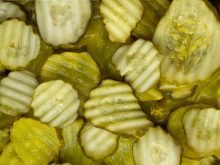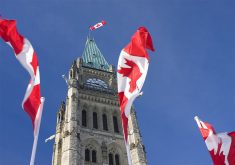IN A WAY, the passing of Jack Horner last week removes the last direct link from one of the most remarkable political stories in Canadian history – the amazing Saskatchewan Horner clan that for a time held an unprecedented presence in Parliament.
On its own, the story of John Henry Horner was remarkable – Saskatchewan farm boy turned Alberta rancher who became a DiefenTory MP and loud voice for western farm issues, a Diefenbaker loyalist who never transferred that loyalty to later Conservative leaders, a rebel who tried to become Tory leader and later shocked almost everyone by becoming a Trudeau Liberal.
Read Also

Growth plates are instrumental in shaping a horse’s life
Young horse training plans and workloads must match their skeletal development. Failing to plan around growth plates can create lifelong physical problems.
The voters of Crowfoot dispatched him then, after 21 years as their MP, and Trudeau rewarded him with a seat on the CNR board and then a job running the Grain Transportation Authority.
In his latter years, Horner returned to his conservative roots by becoming an advocate for rancher land rights.
It was a remarkable life on its own, all 77 years of it. It is all the more remarkable when seen as just one thread in the larger Horner story.
The Canadian branch of the family took root near the Quebec town of Shawville where there was inter-marrying with the Argue clan that produced Hazen, the last leader of the CCF before it became the NDP.
Ralph Byron Horner migrated west to Blaine Lake, Sask., and from there sired a political dynasty.
He was sent to the Senate in 1933 by Conservative prime minister R.B. Bennett and stayed until his 1964 death. After 1958, sons Jack and Hugh and nephew Albert joined him as MPs.
Hugh left to join the rising Progressive Conservative Party in Alberta and served as Peter Lougheed’s deputy premier.
Brother Norval sat as the next generation in Parliament in the 1970s and in the 1980s, retired Ontario cop and cousin Bob Horner sat as a Mulroney Conservative.
But the unprecedented Horner story goes far beyond numbers and longevity in Parliament. Family history is replete with wild characters and tall tales, tales that Jack loved to tell with his feet propped up on whatever table was nearby.
There was, for example, great uncle Ralph who was a 19th century circuit horseback Methodist preacher in western Quebec and eastern Ontario who became so radical and fundamentalist that he was expelled.
No problem. He set up his own church in the 1880s, declared himself bishop and began recruiting followers who called themselves Hornerites. A branch later moved to Alberta as the Holiness Movement.
But perhaps the most memorable moment in the Horner saga came May 18, 1966, when Hugh, a medical doctor, was a player in what could have been one of Parliament’s great tragedies.
With the raucous House of Commons packed with politicians, among them MPs with names like Pearson, Diefenbaker, Douglas, Turner, Trudeau and Chrétien, a noise was heard in a third floor hallway. A call went out for a doctor.
Horner ran upstairs to discover a mutilated, dying Alberta man in a heavily damaged washroom. Paul Joseph Chartier had planned to blow up Parliament and what he saw as a corrupt system.
Instead, the bomb went off early and he was the only victim. He died in Hugh Horner’s arms.
The Horner saga will never be replicated.














